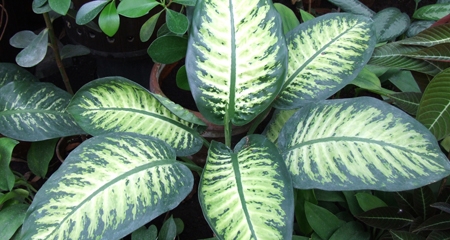
Spring is here, and along with sunshine and warmer temperature we are now starting to see the colorful array of new vegetation. Pet parents need to be aware of certain harmful plants that can cause serious health concerns to their canine and feline companions. Here are the most common ones:
Daffodil

Daffodils are a common springtime plant that many people love to admire during strolls in the park or even to add to their own gardens. These beautiful plants are actually considered poisonous to dogs and cats. Ingestion of the plants, especially the most toxic portion, the bulb, can cause severe gastrointestinal issues and a life-threatening drop in blood pressure. Daffodils contain lycorine and crystals which can cause vomiting, drooling, diarrhea, abdominal pain, cardiac arrhythmias, and difficulty breathing. If you pet has ingested this plant, contact your veterinarian immediately.
Tulip

Another favorite seasonal flower that can be toxic to your pet is the tulip. When ingested, these flowers, especially the blubs, can result in tissue irritation to both the mouth and esophagus. The clinical signs frequently reported include drooling, vomiting, abdominal discomfort and diarrhea. Supportive care provided by your veterinarian is the best treatment advised.
Lily

These beautiful flowers are a popular choice to display in your home, but can be a deadly threat to curious cats looking for a new and interesting treat. Dogs are not as sensitive to the toxic effects as cats are, but it is still best to keep your canine companion from nibbling on this plant. Certain types of lilies, including Tiger, Day, Asiatic, Easter and Japanese Show lilies are extremely toxic to cats and can cause acute kidney failure. These cats should be immediately transported to your veterinarian or emergency hospital so the treatment process can be initiated quickly, which would most likely include decontamination and fluid diuresis. Ingesting simply 2-3 petals or leaves can cause drastic effects on your cat’s kidneys.
Azalea

Ingestion of even a small portion of this plant can pose a serious threat to cats and dogs. Azaleas contain grayanotoxins, which disrupts the sodium channels involved in the normal functioning of skeletal and heart muscle. The most common clinical signs are vomiting, diarrhea, abdominal pain, abnormal heart rate, tremors and weakness. The grayanotoxins are generally processed through the body rapidly, so fortunately animals that ingest a small amount only experience toxic effects for a few hours. Regardless of the amount ingested, it would be still wise to alert your veterinarian of the toxic plant ingestion and follow their recommendations for treatment.
Oleander

The oleander is a popular outdoor flowering shrub. It contains cardiac glycosides oleandrin and nerioside, both of which are very toxic to dogs and cats. Ingestion of these poisonous plants can result in fatal heart abnormalities, muscle tremors, incoordination, vomiting and bloody diarrhea. The abnormal clinical signs can start very quickly, within an hour to a few hours of swallowing. This makes it very challenging for pet owners to recognize symptoms and pursue treatment before the animal is in poor condition. For this reason, the prognosis for an animal ingesting oleander is poor and treatment is often not successful.
Dieffenbachia

Dieffenbachia is a large flowering plant that is commonly found in many homes and offices. When ingested, diffenbachia causes oral irritation, vomiting, and difficulty swallowing in dogs and cats. The toxic components are calcium oxalate crystals, which have been reported to create a burning sensation of the lips, tongue, and mouth. After consuming this plant your pet may experience difficulty swallowing, excessive drooling, and display choking or gagging behaviors. Gastrointestinal upset is also likely to occur. In extreme cases dieffenbachia can cause comas or permanent damage to critical organs, including the liver and kidneys, which may even lead to death. If you are aware of ingestion consult with your veterinarian or poison control to help treat your pet as soon as possible. They will often recommend decontamination (induction of vomiting) with a designated amount of hydrogen peroxide based on your pet’s weight. If there is any swelling present, an anti-histamine, such as diphenhydramine (Benadryl), would be suggested in order to reduce the inflammatory response. It would be advised to carefully observe for signs of signs of difficulty breathing or dehydration that require immediate veterinary attention.